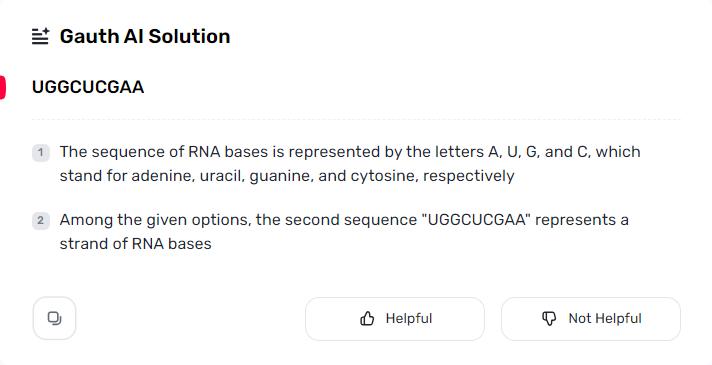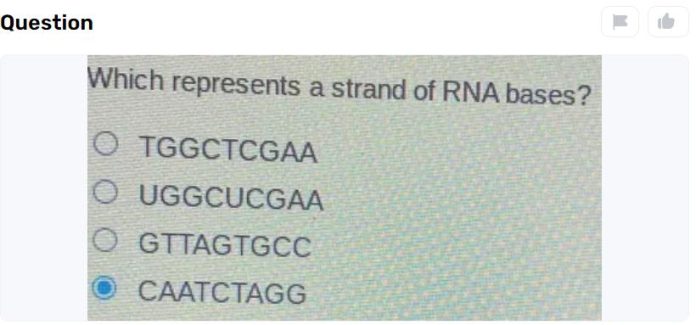In sub-atomic science, recognizing a strand of RNA bases is a fundamental cycle that is essential for understanding quality articulation, guidelines, and cell capabilities. Using progressed sequencing advances like cutting-edge sequencing (NGS), this method involves detaching RNA from organic examples, changing it into reciprocal DNA (cDNA) through the course of converse record, and lastly, sequencing.
Using these methods, researchers can now precisely identify the RNA bases adenine (A), cytosine (C), guanine (G), and uracil (U). Let us explore which represents a strand of rna bases? tggctcgaa uggcucgaa gttagtgcc caatctagg. When joined with bioinformatics information examination apparatuses, this technique reveals new insight into the jobs that RNA particles play in how we might interpret hereditary systems and adds to the advancement of designated treatments.
Types of RNA
RNA, also known as ribonucleic acid, comes in many different forms that are necessary for how cells work. ribosomes receive genetic information from messenger RNA (mRNA), a DNA transcript, for the purpose of protein synthesis from the nucleus. Move RNA (tRNA) deciphers mRNA codons and conveys amino acids during protein get-together. Ribosomal RNA (rRNA) structures the primary and synergist center of ribosomes, where protein combination happens.
Composition of RNA Bases
RNA particles are made out of nucleotide units containing four essential bases: adenine (A), cytosine (C), guanine (G), and uracil (U). Adenine matches with uracil in RNA, while cytosine matches with guanine, framing stable base matches basic for RNA design and capability. These bases add to RNA’s different capabilities, from encoding hereditary data (mRNA) to catalyzing protein amalgamation (rRNA) and directing quality articulation (miRNA).
Methods to Identify RNA Bases
RNA Bases can be identified by different methods. Some of the methods are provided below.
Molecular Techniques
The ID of RNA bases requires the utilization of atomic procedures like the converse record polymerase chain response (RT-PCR), which changes over RNA into reciprocal DNA (cDNA). Using standard DNA sequencing techniques, this modification contemplates simpler intensification and sequencing. Front-line sequencing (NGS) stages have changed RNA assessment by engaging high-throughput sequencing of RNA particles.
Bioinformatics Tools
Bioinformatics devices assume a basic part in RNA base recognizable proof by handling and dissecting tremendous measures of sequencing information. RNA sequences are compared to databases using sequence alignment algorithms like BLAST and Bowtie to find similarities and differences. Models of RNA folding patterns that are essential for comprehending functional RNA motifs are provided by RNA secondary structure prediction tools like RNAfold and Mfold.
Experimental Approaches to RNA Base Identification
If you want to know about the experiments that help in identifying RNA Bases. Then you can take a look at the given points.
RNA Sequencing
RNA sequencing (RNA-seq) adjusts the examination of RNA bases by giving broad pieces of information into RNA verbalization and assortment. Beginning with RNA extraction and conversion into complementary DNA (cDNA), RNA-seq uses next-generation sequencing (NGS) platforms to generate millions of short reads that map back to the transcriptome.
Structural Analysis
Analyses of the Structure Techniques of structural analysis are used to investigate the folding patterns and functional interactions of RNA molecules in three dimensions. Chemical probing methods like selective 2′-hydroxyl acylation analyzed by primer extension (SHAPE) and dimethyl sulfate (DMS) mapping probe RNA secondary structures by marking nucleotides that are susceptible to chemical modifications.
Steps to Use Gauth to Identify RNA Base
Here are the steps to use Gauth to identify RNA base:
Step 1: Visit Gauth
Start by getting to the Gauth stage either through its site or versatile application. To ensure a smooth user experience, make sure your internet connection is stable. Gauth gives an easy-to-understand interface intended to help with scholarly questions, including those connected with sub-atomic science and RNA-based distinguishing proof.
Step 2: Enter your Confusion
Utilize the text input field once you are on the Gauth interface to type or paste your specific query or confusion regarding the identification of RNA bases. Questions about how to sequence RNA, the structure of RNA molecules, or how to interpret RNA biology-related experimental data are all examples of this.
Step 3: Get Free Trial
Take advantage of Gauth’s free trial to get a feel for the software’s capabilities before making a financial investment. This time for testing permits admittance to cutting-edge man-made intelligence-fueled highlights that work with itemized examination and complete answers for your RNA base distinguishing proof inquiries.
Step 4: Get Your Solution
Locate the Answer Subsequent to presenting your inquiry, Gauth’s simulated intelligence calculations will handle the data given and create a nitty gritty arrangement custom-made to your particular inquiry. Using Gauth for RNA base ID guarantees effective learning and critical thinking in the field of sub-atomic science and biotechnology.

Concluding
Distinguishing a strand of RNA bases includes a modern mix of exploratory procedures and bioinformatics devices. Each step in deciphering the sequence, structure, and functional significance of RNA molecules is crucial, from RNA extraction and sequencing to structural analysis and functional annotation. Progresses in RNA sequencing advances, for example, cutting-edge sequencing (NGS), have changed the field by empowering high-throughput examination of RNA records with extraordinary precision and profundity.










